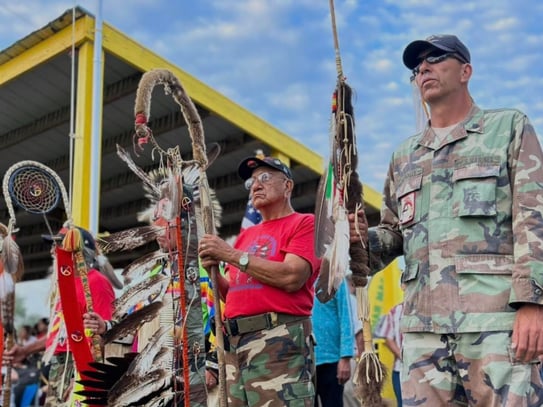The Complicated Identity Problem: What’s in a Name?
Names carry power. They carry history, identity, and, sometimes, pain. For Native people, what we’re called, and what we call ourselves, has always been complicated. “Indian,” “Native American,” “Indigenous,” “Tribal Nations,” “First Nations”, all these words carry different meanings, and for many of us, different emotions.
I am Apsáalooke — Children of the Big Beaked Bird. In the western language, we were called “Crow.” Even that name is a translation of someone else’s misunderstanding. So when we talk about naming, we’re really talking about how we’ve been seen and how we choose to see ourselves.
The Roots of the Conflict
The word Indian itself is based on a falsehood. Christopher Columbus thought he had landed in India, and the label stuck. For many Native people, Indian has become a trauma word; it is a reminder of colonization, forced removals, and assimilation. Yet, it’s also the term still used in federal law and government grants: “American Indian and Alaska Native.” That creates a deep conflict.
Many of our elders still use “American Indian.” That’s the language of the programs they grew up with, the forms they filled out, and the benefits they earned. Out of respect, we don’t correct them publicly. In our culture, you sit down with coffee, tea, or a pop and have that conversation quietly, in a good way.
Younger generations, however, often prefer Native American or Indigenous. These words feel more accurate, more connected to the land. “Native” means belonging to the land and we are people of the land. But “Native” alone doesn’t work, because everyone is native to somewhere.
Some prefer Indigenous American though others point out that “indigenous” is a broad term, used for plants, animals, and people. Tribal Nations or First Nations resonate with many because they affirm sovereignty — that we are not one people, but many Nations, each with our own culture and government.
Simple, but Complicated
There’s no easy answer. “Native American” may be the most widely recognized term, but it isn’t perfect. American Indian remains the federal term. Indigenous feels inclusive but broad. And Tribal Nations highlights sovereignty but isn’t yet widely used.
It’s simple, but complicated because this isn’t just about language. It’s about identity, belonging, and healing from the legacy of being misnamed for centuries.
A Path Forward
The truth is, we may need to hold space for multiple truths at once, respecting tribal and generational preferences while advocating for change. We need more conversation across Indian Country through tribal liaisons, health departments, and organizations like the National Congress of American Indians to help define and advance a name that reflects who we truly are.
And we need the federal government to listen. The term that defines us in law should be the one we choose for ourselves.
In the meantime, there’s a practical need too: ensuring that whether someone searches online for “American Indian Veteran,” “Native Veteran,” or “Indigenous Veteran,” they can find the resources they need. We have to make sure that advocacy, education, and outreach reflect the diversity of our identities — so no one gets lost in translation.
Naming with Respect
As we move forward with Native American & Alaska Native Health & Wellness: In Service and Beyond, we honor all who serve — and the lands they come from. However you identify — Native, Indigenous, American Indian, or by your specific tribal name — your story matters.
What’s in a name? For us, it’s everything. It’s history, sovereignty, and survival.
And it’s time the world got it right.

